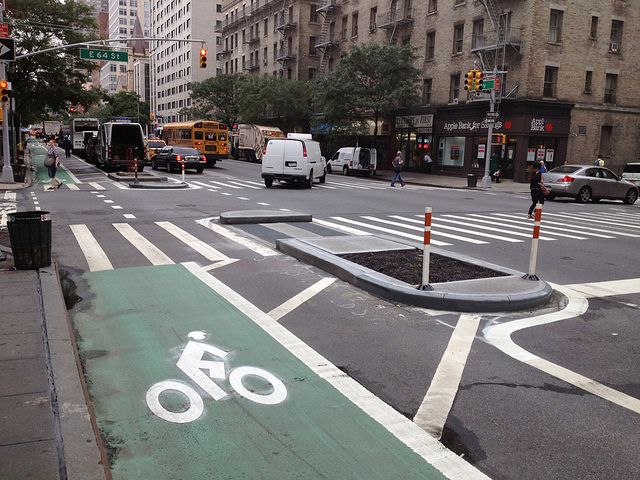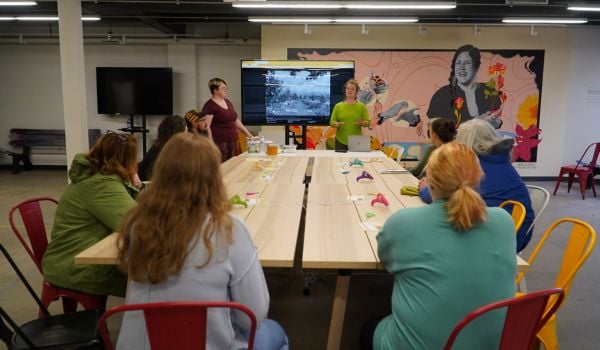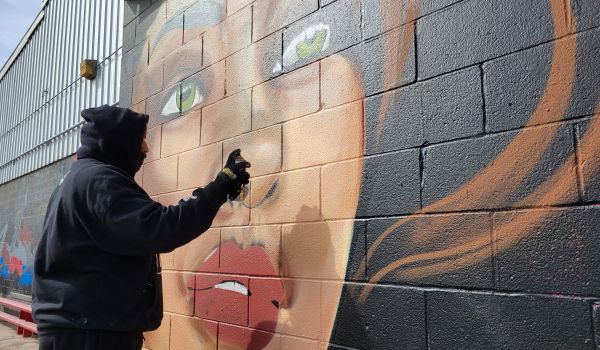The 21st Congress for the New Urbanism is going on right now in Salt Lake City. We have three bloggers on hand to tell you about its highlights.
“This is a Copenhagen-style bicycle lane,” said urban planner John Massengale at a Thursday afternoon CNU 21 session, “though most people from Copenhagen would not recognize it.” Massengale was pointing to a picture of First Avenue in New York City, with its newly constructed protected bicycle lanes, pedestrian medians and an express bus lane marked with colored paint, not to mention four lanes for vehicular traffic.
This street, in all its signaled and striped splendor, stands as a showcase example of a “complete street” in an American city, Massengale said.
But Massengale and fellow urban planner Victor Dover questioned whether conventional complete street designs are doing enough to incorporate placemaking, or creating and fostering the conditions for great urban places where people simply want to be.
From a transportation policy and design approach, complete streets ensure that streets are safe and accessible for all users, including cyclists, public transit riders, cars and pedestrians of all ages and abilities. Using a variety of design elements, complete streets are intended to soften the dominance of the automobile in the urban environment.
Dover and Massengale, however, argued that there is still a disconnect between engineering and placemaking, and that even cities with the most complete streets can still feel completely overrun with vehicles.
Going back to the example on First Avenue, Massengale stressed that the focus of the new street design is still on moving the most cars. Sure, the cyclists and bus riders may have an easier go of it, but what about the people on foot? Even parts of First Avenue can feel off-limits to pedestrians, and are a far cry from what city streets looked like in the 1920s and ’30s, when cars shared the road with streetcars, vendors, children at play and cyclists.
Dover and Massengale suggested we need to be more creative in envisioning and rebuilding our streets by converting more of them true public spaces. By designing for slower speeds, narrower streets, more trees and public plazas and places for people to gather, cities can create places that are move valuable to the social fabric than arterial-style roads, pedestrian median or not.
Dover again drew upon an example from New York City, where the Department of Transportation under Janette Sadik-Khan has done a commendable job reclaiming streets from auto dominance by creating attractive pedestrian plazas in places like Herald Square and Times Square. But this approach is far from conventional, and still would be a quite radical proposal for most places in America. Dover, in particular, stressed that planners should not be afraid to tout examples from Europe — think Barcelona’s Las Ramblas and Kensington High Street in London — as prime examples of streets as places that are universally beloved, with property values to prove it.
A recent study conducted by the National Complete Streets Coalition found that in 2012, nearly 130 communities nationwide adopted complete streets policies, with 488 such policies now in place across the U.S. As these places move from adopting policy to actually implementing new designs, the importance of challenging the conventional wisdom of simply adding bicycle lanes and nicer sidewalks is crucial for communities seeking to create loveable, endearing places in which people can live, work and play.












